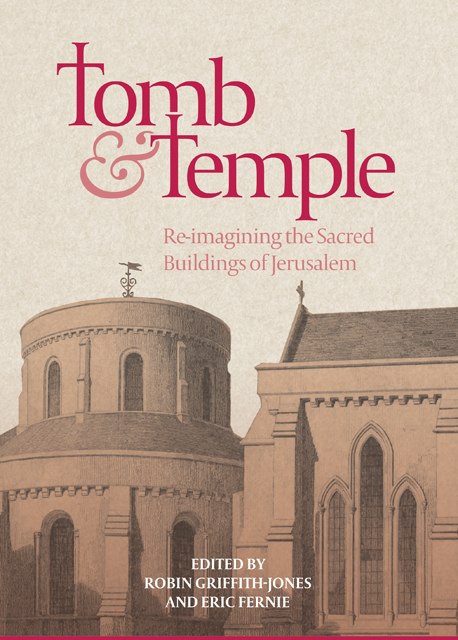Book contents
- Frontmatter
- Contents
- Illustrations
- Preface
- Contributors
- Abbreviations
- Editors’ Note
- Introduction
- Part I Re-presenting Jerusalem
- Part II The Church of the Holy Sepulchre
- Part III The Noble Sanctuary / The Temple Mount
- Part IV The Orthodox Churches
- Part V Round Churches in the West
- Appendix: The Knights’ Effigies: Newly Discovered Drawings by John Guillim, c. 1610
- Epilogue
- Index
- Already Published
Appendix: The Knights’ Effigies: Newly Discovered Drawings by John Guillim, c. 1610
Published online by Cambridge University Press: 17 January 2023
- Frontmatter
- Contents
- Illustrations
- Preface
- Contributors
- Abbreviations
- Editors’ Note
- Introduction
- Part I Re-presenting Jerusalem
- Part II The Church of the Holy Sepulchre
- Part III The Noble Sanctuary / The Temple Mount
- Part IV The Orthodox Churches
- Part V Round Churches in the West
- Appendix: The Knights’ Effigies: Newly Discovered Drawings by John Guillim, c. 1610
- Epilogue
- Index
- Already Published
Summary
The Drawings Of John Guillim (1560-1621), Folger Shakespeare Library, V.A.447, FF. 39-44
Robin Griffith-Jones
Dr Nigel Ramsay has recently discovered in the Folger Library, Washington DC, a set of eleven drawings by John Guillim (1560–1621) of the Temple Church effigies and gravestones. These drawings predate by many decades both the repositioning of the effigies in 1695 and the earliest representations previously known to survive, commissioned by Smart Lethieullier by 1736/7. The drawings require further detailed study. This preliminary account examines the evidence the drawings offer on the effigies’ layout, c. 1610, and in particular on a grave-slab that has since been lost. Philip Lankester (471–78 below) outlines the importance of these drawings for our knowledge of the effigies. We will focus on just one sheet [Fig. 22.5] with two drawings: of the effigy identified since the 1840s as of William Marshal II; and of a gravestone, now lost, with a lion rampant and an inscription round part of its border, ‘Miles eram Martis’.
Camden, in the third edition of Britannia (1594), identified three of the Temple Church effigies as of the Marshals and added a marginal note:
In altero horum tumulo lit[t]eris fugientibus legi, Comes Penbrochiae, & in latere, Miles eram Martis Mars multos vicerat armis.
That is: Camden read the hexameter in faded letters ‘on another tomb of these [Pembrokes]’, or perhaps ‘on the other tomb of these [Pembrokes]’, or (to paraphrase) ‘on one of these tombs [of the Pembrokes]’. Philémon Holland’s translation of Camden, in the 1637 edition, renders the note: ‘Upon William the Elder, his Tombe, I have some yeares since read in the upper part Comes Penbrochiae’. This is more precise than Camden’s own account; as we will see, the ascription resurfaces at the end of the seventeenth century, in Dingley.
William Dugdale wrote of the effigies (1666):
Within a spacious grate of Iron, in the midst of the round walk, under the Steeple, do ly eight Statues in military Habits; each of them having large and deep Shields on their left Armes. Of which five are cross legg’d. There are also three other Gravestones lying about five inches above the level ground; on one of which is a large Escocheon with a Lion rampant graven thereon.
- Type
- Chapter
- Information
- Tomb and TempleRe-imagining the Sacred Buildings of Jerusalem, pp. 457 - 478Publisher: Boydell & BrewerPrint publication year: 2018



